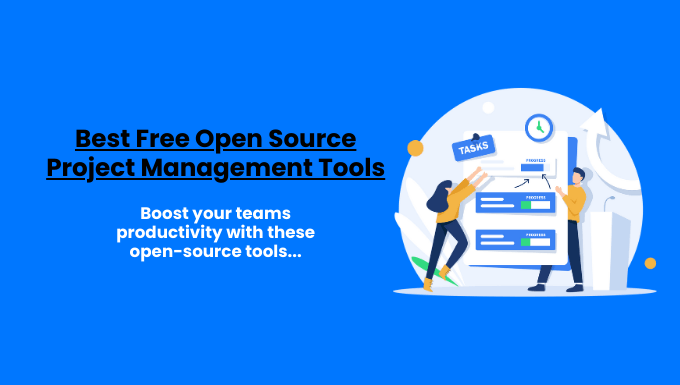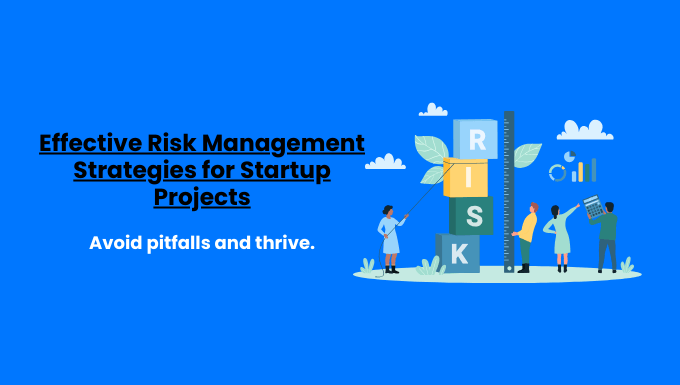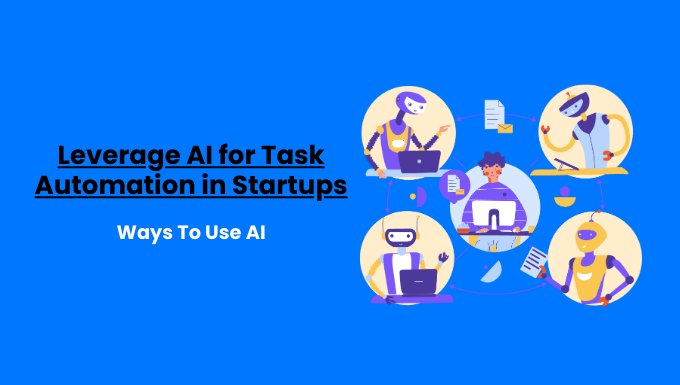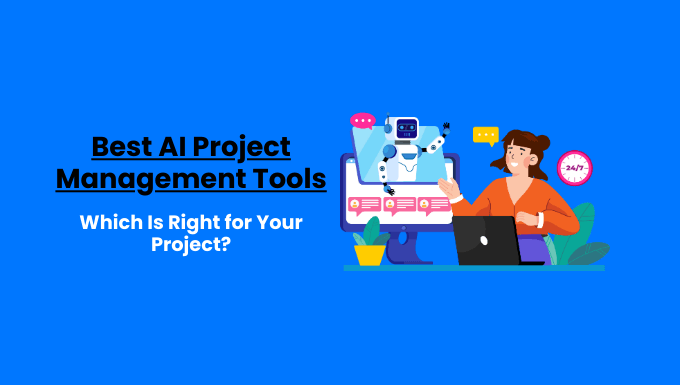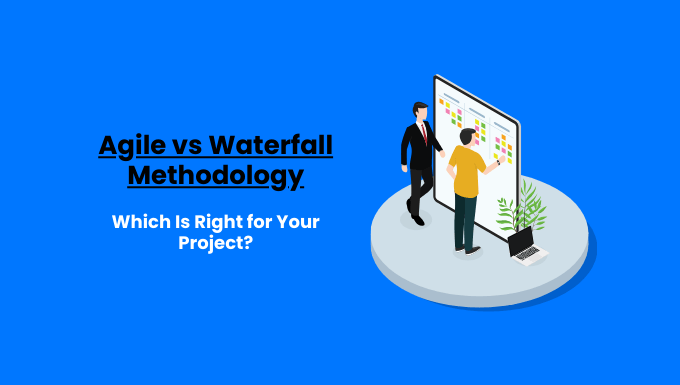Are you struggling to find the perfect pricing strategy for your SaaS product?
Navigating the complex world of SaaS pricing can be daunting, but it’s crucial for your business’s success.
Discover how to overcome common challenges and implement effective pricing strategies that will boost your revenue and attract more customers.
By mastering the art of SaaS pricing, you’ll unlock the potential for sustainable growth and increased profitability.
Ready to revolutionize your approach to pricing?
Key Takeaways:
- Understand various SaaS pricing models: flat-rate, usage-based, tiered, per-user, and freemium.
- Conduct thorough market research to inform your pricing decisions.
- Utilize A/B testing and data analysis to optimize your pricing strategy.
- Implement advanced tactics like value-based pricing and psychological pricing.
- Stay informed about emerging trends in SaaS pricing to maintain a competitive edge.
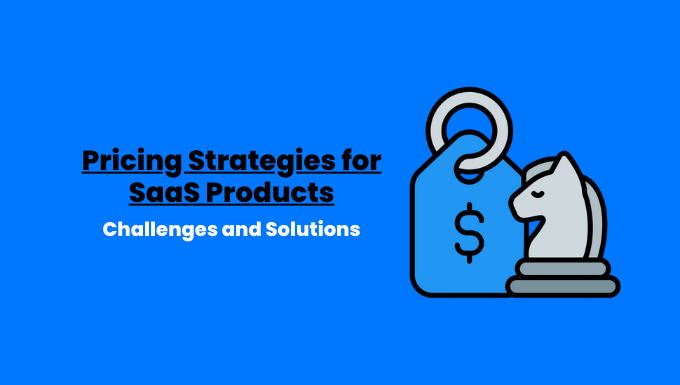
Contents
ToggleImportance of Pricing in SaaS Business Models
Pricing transcends merely assigning a number to your product; it represents a strategic decision that profoundly impacts revenue, customer acquisition, and overall business growth, necessitating a deep dive into a guide to SaaS pricing models.
Consider these compelling statistics relevant to subscription models and flat rate pricing in many SaaS businesses.
- 80% of SaaS companies prioritize pricing as their top concern.
- Pricing optimization can result in a 2-4% increase in profits, underlining the importance for SaaS companies to find the best pricing model.
- 93% of SaaS companies provide some form of free trial to attract and convert customers, illustrating a common strategy and model in the SaaS industry.
Your pricing strategy, potentially incorporating elements of cost-plus pricing, serves as the cornerstone of your entire business model, shaping customer perception, competitiveness, and profitability.
By comprehending the significance of pricing in SaaS, you can make well-informed decisions that align with your business goals and market positioning, underlining the importance of the types of SaaS pricing strategies.
Common Pricing Strategies for SaaS Unveiled
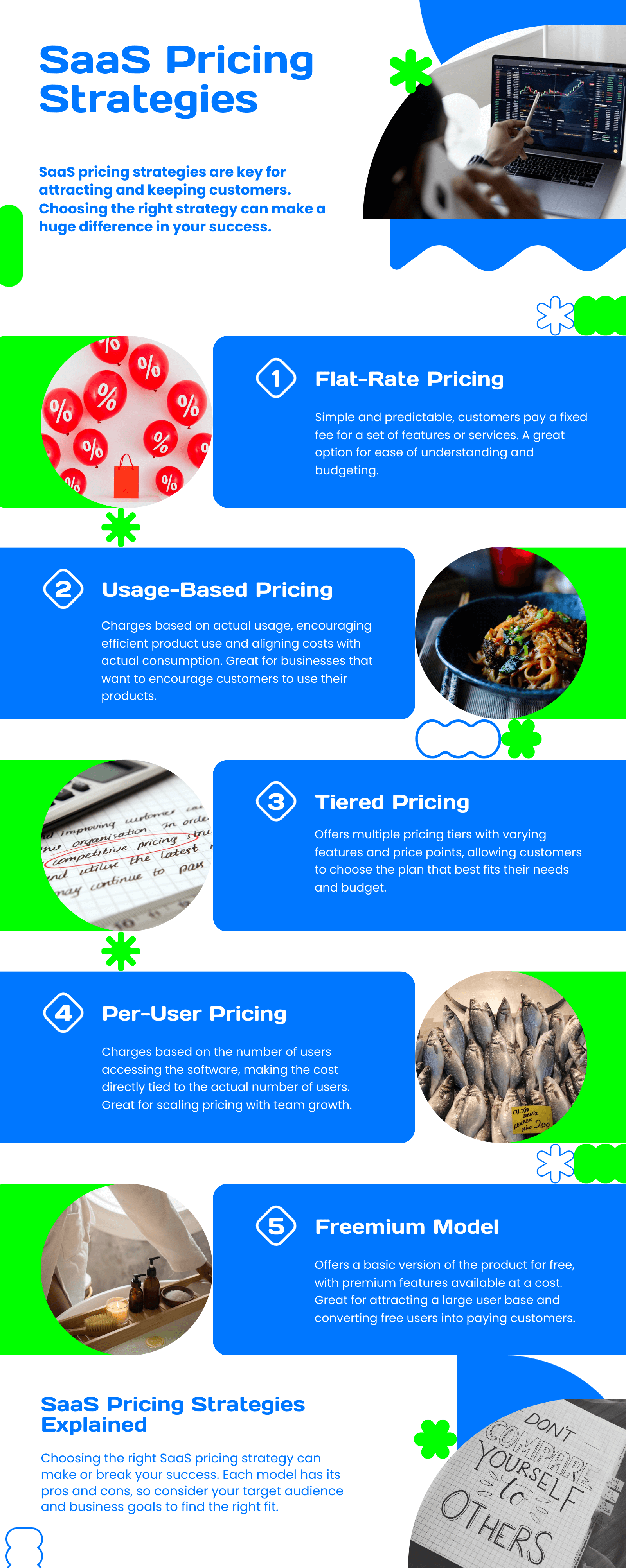
In the world of Software as a Service (SaaS), pricing strategies are paramount in attracting and retaining customers.
Let’s explore some common SaaS pricing strategies that can assist you in positioning your pricing effectively and driving business growth.
1. Flat-Rate Pricing
Flat-rate pricing is a simple model where customers pay a fixed fee for a set of features or services, regardless of usage.
Benefits of Flat-Rate Pricing:
- Simplicity: Easy for customers to understand and budget for, making it an effective pricing option, especially when applying a flat rate pricing model for simplicity.
- Predictability in a pricing model for your SaaS ensures customers know what they’re paying for. Provides a stable revenue stream for your business, a benefit of adopting a straightforward user pricing or subscription model.
Example of Successful Implementation: Dropbox offers various plans with fixed storage limits, simplifying the choice for users without worrying about usage-based charges.
2. Usage-Based Pricing
Usage-based pricing charges customers based on their actual product or service usage. The more they use, the more they pay.
Benefits of Usage-Based Pricing: Encourages customers to use the product more efficiently while allowing businesses to price their product transparently, embodying key principles of popular SaaS pricing.
- Cost-Efficiency: A vital element in formulating a B2B SaaS pricing strategy that ensures long-term sustainability. Customers only pay for what they use, aligning well with a user-based pricing strategy that encourages more customers to use your product.
- Scalability: This is essential when designing a per-user pricing model, ensuring the pricing strategy and model can scale with business growth, a critical consideration for new SaaS ventures. Aligns pricing with usage, offering flexibility as the business expands.
To implement usage-based pricing, track key usage metrics, and set pricing tiers based on usage thresholds to cater to different customer segments effectively, a method favored by many SaaS companies, showcasing a dynamic type of pricing strategy and model.
3. Tiered Pricing
Tiered pricing involves multiple pricing tiers with varying features and price points to meet different customer needs and budgets.
Benefits of Tiered Pricing:
- Personalization: Using feature pricing to tailor offerings to customer needs. Allows customers to choose a plan that best fits their requirements, highlighting the importance of understanding different types of SaaS pricing models.
- Revenue Maximization: Encourages customers to upgrade to higher tiers for more features.
Effective Use Case: HubSpot offers different tiers with features like CRM, marketing automation, and sales tools, enabling customers to select a plan aligned with their business goals.
4. Per-User Pricing
Per-user pricing charges customers based on the number of users accessing the software or service, with each user paying a set fee, typically monthly, demonstrating a key type of SaaS pricing.
Benefits of Per-User Pricing: Aligns costs with actual usage, similar to the benefits seen in active user pricing strategies.
- Scalability: Scales pricing with the growth of the customer’s team.
- Transparency: This is key in cost-plus pricing, where customers understand the basis of pricing. A clear pricing structure based on user count demonstrates how a per-active user pricing model may benefit SaaS providers.
Successful Example: Employing a feature pricing model allows SaaS companies to charge based on the specific features each customer uses. Slack adopts per-user pricing, incentivizing businesses to add more users as they expand, leading to increased revenue.
5. Freemium Model
The freemium model offers a basic version of the product for free, with premium features available at a cost, aiming to convert free users into paying customers, a tiered pricing strategy beneficial for SaaS companies.
Benefits of the Freemium Model:
- User Acquisition: Attracts a large user base with the free offering.
- Upselling Opportunities: Encourages users to upgrade for enhanced functionality.
Leveraging the Freemium Model: Introducing freemium pricing to attract a broader user base, an effective tiered pricing strategy for SaaS providers.
Spotify offers a free tier with ad-supported music streaming and premium subscriptions for ad-free listening, successfully growing its user base and revenue streams.
Common Challenges in SaaS Pricing
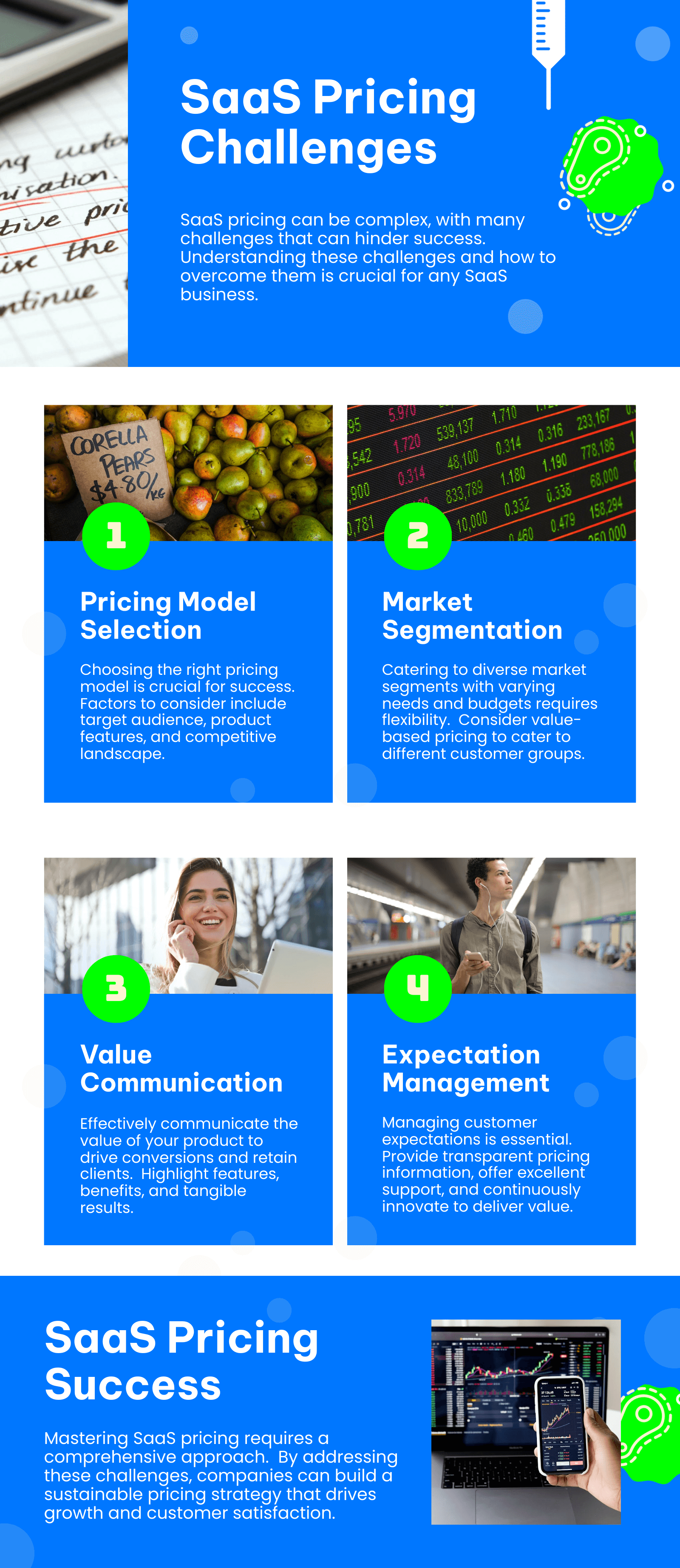
When it comes to Software as a Service (SaaS) pricing, numerous challenges can hinder business owners and impact their revenue and growth.
Let’s delve into these challenges and explore strategies to overcome them, focusing on the complexities of B2B SaaS pricing and the application of a per-user pricing model.
1. Identifying the Right Pricing Model
One of the pivotal challenges in SaaS pricing is determining the most suitable pricing model for your product, from freemium pricing models to user pricing models.
Whether it’s usage-based pricing, tiered pricing, or value-based pricing, selecting the right model can significantly impact your bottom line.
Common Pitfalls:
- Setting prices too low, undervaluing your product.
- Implementing complex pricing structures that confuse customers.
- Neglecting customer feedback and market trends when setting prices can be particularly detrimental in the B2B SaaS sector.
How to Avoid Them:
- Conduct thorough market research to understand customer needs and preferences, which is foundational for developing a feature pricing model.
- Test different pricing models to see which resonates best with your target audience, ensuring to choose the right pricing model that aligns with customer expectations.
- Continuously monitor and adjust your pricing strategy, employing both cost-plus pricing and value-based pricing, based on customer feedback and industry trends.
2. Pricing for Different Market Segments
Another challenge in SaaS pricing is catering to diverse market segments with varying needs and budgets, demanding a flexible approach to feature-based pricing; this shows that SaaS companies need an adaptable pricing model.
How can you set prices that appeal to different customer groups without sacrificing profitability? By adopting a value-based pricing strategy, companies can navigate this challenge successfully.
Example: HubSpot, a leading SaaS company, effectively handles market segmentation by offering different pricing tiers based on customer requirements.
From startups to enterprise clients, HubSpot provides tailored pricing plans to meet diverse needs.
3. Communicating Value to Customers
Effectively communicating the value of your SaaS product to customers is crucial for driving conversions and retaining clients.
How can you convey the benefits of your offering in a way that resonates with your target audience while highlighting your active user pricing model?
Best Practices in creating effective SaaS pricing strategies include studying competitor pricing and exploring popular SaaS pricing models.
- Clearly articulate the unique features and advantages of your product.
- Use customer testimonials, case studies, and demos to showcase real-world benefits and help customers understand how to use your product.
- Highlight how your SaaS solution addresses specific pain points and delivers tangible results for users.
4. Managing Customer Expectations
Managing and exceeding customer expectations is essential for building long-term relationships and fostering customer loyalty.
How can you ensure that your SaaS pricing aligns with the value customers expect to receive?
Strategies:
- Provide transparent pricing information upfront to avoid surprises, a practice that helps SaaS companies need to establish trust.
- Offer exceptional customer support to address any concerns or issues promptly.
- Continuously innovate and enhance your product to deliver ongoing value to customers.
Effective Strategies for Optimizing SaaS Pricing
Conducting Market Research
Setting the right pricing for your SaaS product is crucial for success.
Market research is key to understanding your target audience, competitors, and industry trends, including the efficiency of a per-feature pricing strategy.
By conducting thorough market research, you can gather valuable insights that will help you make informed pricing decisions and stay competitive in the market.
Steps to conduct effective market research:
- Define your target market: Identify the specific segment of customers you want to target with your SaaS product. Understand their needs, preferences, and willingness to pay to effectively implement feature pricing and customization in your offerings.
- Analyze competitors: Study your competitors’ pricing strategies, including competitor pricing and popular SaaS pricing, as well as features offered, and target customer base. This will help you position your pricing effectively in the market, critical for finding the best pricing model for your SaaS.
- Gather customer feedback: Conduct surveys, interviews, and focus groups to gather insights directly from your target audience to choose the right pricing model. Understand their pain points, expectations, and price sensitivity.
- Analyze industry trends: Stay updated on industry trends, pricing benchmarks, and best practices. This will help you adapt your pricing strategy to changing market conditions.
A/B Testing for Pricing
A/B testing is a powerful technique used by SaaS companies to optimize pricing strategies. By comparing two versions of a pricing model, you can determine which performs better in terms of conversions, revenue, and customer satisfaction.
Dynamic Pricing Strategies
Dynamic pricing involves adjusting the price of a product or service in real-time based on factors like demand, competition, and customer behavior.
This flexible pricing strategy allows SaaS companies to maximize revenue and effectively cater to different customer segments through varied models like freemium or active user pricing.
Customer Feedback and Data Analysis
Customer feedback is a valuable source of insights that can help SaaS companies refine their pricing strategies and enhance customer satisfaction.
By gathering and analyzing customer feedback effectively, you can identify pricing pain points, feature preferences, and areas for improvement, aligning closely with types of SaaS pricing models.
How to gather and analyze customer feedback for pricing optimization:
- Conduct surveys and polls to gather feedback on pricing perceptions, value propositions, and feature preferences, enabling companies to refine their per-feature pricing approach.
- Monitor customer support interactions and reviews to identify common pricing-related issues or concerns, facilitating improvements in how you price your product.
- Utilize analytics tools to track user behavior, engagement metrics, and conversion rates to understand how pricing impacts customer decisions.
- Implement feedback loops to continuously gather insights from customers and iterate on your pricing strategy, including per-user pricing, to meet their evolving needs, an approach crucial for SaaS providers.
Advanced Strategies for SaaS Pricing
In the competitive realm of Software as a Service (SaaS), pricing stands as a pivotal factor in both attracting and retaining customers.
To equip you with the tools to navigate the intricate landscape of SaaS pricing, we delve into advanced strategies that can give your business a competitive edge.
1. Value-Based Pricing
Value-based pricing revolves around setting the price of a product or service based on its perceived value to the customer rather than its production cost.
By aligning the price with the value delivered to the customer, businesses can capture a larger share of the value they create, a principle central to user-based pricing.
This approach allows companies to price their offerings higher for customers who derive more value, ultimately leading to increased revenue and profitability through a selected right pricing strategy, embodying the essence of value-based pricing.
How a Leading SaaS Company Applies Value-Based Pricing: Salesforce, a prominent SaaS company offering customer relationship management (CRM) solutions, bases its pricing on the value it provides to businesses in managing customer relationships, improving sales processes, and driving growth.
By offering different pricing tiers with varying features and capabilities, Salesforce ensures that customers pay according to the value they receive, a clear example of a tiered pricing model.
2. Psychological Pricing Tactics
Psychological pricing tactics leverage human psychology to influence purchasing decisions.
By setting prices at specific levels (such as $9.99 instead of $10), utilizing decoy pricing strategies, or highlighting discounts and savings, businesses can create a perception of value and urgency in the minds of customers. These tactics can lead to increased sales, higher conversion rates, and improved customer satisfaction.
Effective Use of Psychological Pricing in SaaS: Employing techniques that make the pricing page more appealing to the buyer’s psychology, akin to the attractiveness of a flat rate pricing model.
HubSpot, a popular SaaS platform for inbound marketing and sales, effectively employs psychological pricing tactics to attract and retain customers.
By offering tiered pricing plans with clear value propositions, free trials, and limited-time discounts, HubSpot creates a sense of urgency and value for potential customers, solidifying its position as a market leader in the SaaS industry.
3. Geographic Pricing
Geographic pricing involves tailoring pricing strategies based on the geographic regions in which a business operates.
Factors such as local market conditions, competition, purchasing power, and consumer preferences can influence pricing decisions. By adjusting prices to suit different regions, businesses can optimize revenue, expand their customer base, and remain competitive in diverse markets.
How to Tailor Pricing Based on Geographic Regions: Airbnb, a global online marketplace for lodging and tourism experiences, implements geographic pricing to accommodate regional differences in demand and supply.
By adjusting prices based on factors like seasonality, local events, and accommodation availability, Airbnb maximizes revenue and ensures competitive pricing in various locations worldwide, highlighting that the best pricing model for your SaaS can depend on external factors.
People Also Asked
1. What are the most common SaaS pricing models?
When considering pricing for your SaaS product, there are several models to choose from, including a tiered pricing model, freemium pricing, and per-user pricing.
- Flat-rate pricing allows a fixed price for all users, regardless of usage.
- Usage-based pricing: Charges based on consumption (e.g., per user, per GB).
- Tiered pricing: Multiple pricing levels offering varying features and service levels.
- Per-user pricing: Charges based on the number of users, highlighting a widely-used pricing option in SaaS models.
- Freemium: Basic features are free, with premium features available for a fee.
- Pay-as-you-go: Customers pay only for what they use, often on a per-transaction basis.
Each model has its own advantages and considerations, depending on your target market and product offering, indicating that SaaS companies need to carefully select their pricing model.
2. How can I determine the best pricing strategy for my SaaS product?
To establish the most effective pricing strategy for your SaaS product, consider the following factors:
- Market research: Analyze competitors and industry norms.
- Customer feedback: Gather insights on willingness to pay, feature preferences, and reactions to a freemium pricing model.
- Value proposition: Align pricing with the perceived value of your product.
- Cost analysis: Ensure pricing covers costs and desired profit margins.
- Experimentation: Test different pricing models, including per active user pricing, and analyze outcomes to discover what best meets your business goals.
- Segmentation: Tailor pricing for different customer segments, utilizing insights to implement a successful per-feature pricing scheme.
By integrating these elements, you can develop a pricing strategy that resonates with your target audience and maximizes profitability.
3. What are the main challenges in SaaS pricing?
Pricing is a crucial aspect of your SaaS business, but it comes with its own set of challenges:
- Value perception: Ensuring customers view pricing as fair and reflective of the product’s value is crucial in how they value your product, underscoring the importance of adopting a value-based pricing strategy.
- Market competition: Balancing competitive pricing with profitability.
- Customer churn: High prices can lead to increased customer turnover.
- Complexity: Managing multiple pricing tiers and models can be challenging.
- Price sensitivity: Understanding how different customer segments react to price changes is crucial for developing the best pricing model for your SaaS.
- Scalability: Ensuring your pricing model can scale effectively with growth.
Addressing these challenges requires a deep understanding of your market, customers, and product value proposition.
4. How can data-driven decisions improve SaaS pricing?
Data-driven decisions can significantly impact your SaaS pricing strategy, especially when considering competitor-based pricing.
Here’s how data can enhance your pricing approach:
- Customer analytics: Understand customer behavior and preferences.
- A/B testing: Experiment with different pricing strategies, including penetration pricing, and analyze performance to identify the most effective penetration pricing strategy.
- Churn analysis: Identify pricing factors contributing to customer turnover.
- Revenue optimization: Find optimal pricing points for maximizing revenue.
- Segmentation analysis: Tailor pricing strategies based on customer segments.
- Market trends: Stay informed on industry trends, including shifts towards feature-based pricing, and adjust pricing accordingly, leveraging insights to refine your strategy and model further.
By leveraging data, you can refine your pricing strategy for optimal results.
5. What future trends should I watch for in SaaS pricing?
As the SaaS landscape evolves, keep an eye on these emerging pricing trends:
- AI and machine learning: Dynamic pricing adjustments based on real-time data.
- Personalized pricing: Customized pricing based on individual user behavior, aligns perfectly with a per-user pricing model.
- Subscription economy: Growth in subscription-based models across industries.
- Value-based pricing: Pricing is tied to the value delivered to customers, which can be enhanced by adopting a per-feature pricing approach.
- Global pricing strategies: Adapting pricing models to different regional markets requires a keen understanding of value-based and per-active user pricing strategies.
- Sustainability: Incorporating sustainability metrics into pricing strategies, including how SAAS companies use type of pricing to promote environmental goals.
